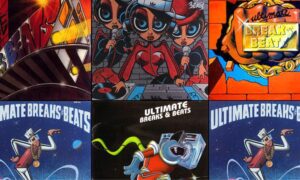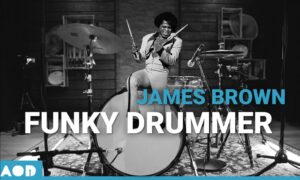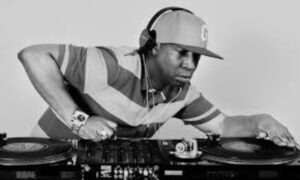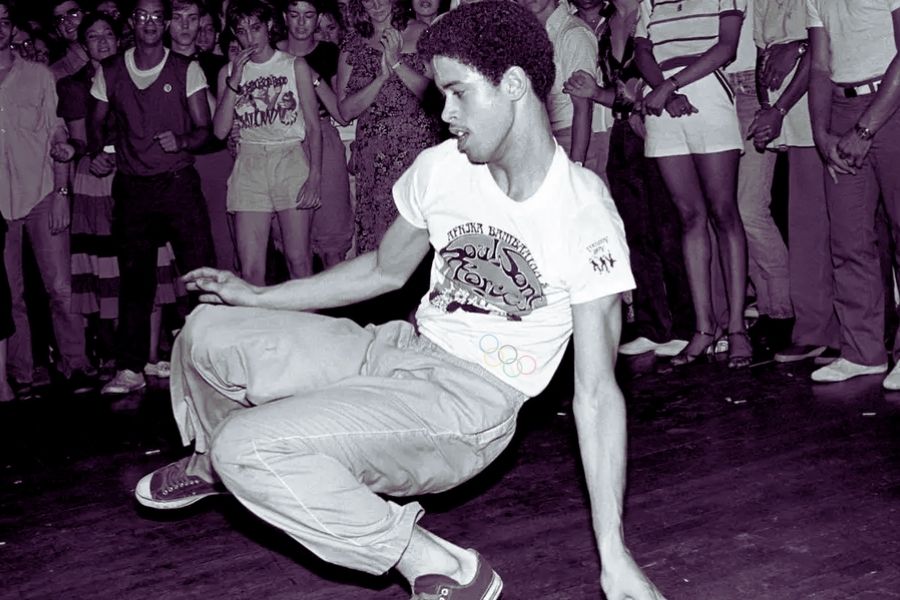What was earlier called Breaks, Breakbeats are sampled loops of drum beats usually produced in a quick-paced syncopated manner to provide dance music. The genre of breakbeats existed way before the term was coined. It was in the late 1970s when the term “Breaking” gained popularity in the world of Hip-Hop music in the United States of America. The presence of breakbeats can be traced back to the 1920s when the mainstream swing and jazz bands played such upbeat rhythms to make people move. What made Breakbeats catchy was its 4/4 time signature. Let’s dive deeper into the history of this genre.
The Origins of Breaks

It is important to understand the term “Breaks” while the origin of Breakbeats is being discussed. These sampled drum loops were originally recorded during the breaks/interludes in classic Hip-Hop tunes when the drummer was mostly performing a solo. Hence, it initially got the name “Breaks” by the pioneers.
When discussing the origins of Breakbeats and Hip-Hop music, there’s one artist from the 1960s who is consensually believed as a revolutionary, if not a creator, of this genre. His song “Funky Drummer” is arguably the history’s most sampled track. This track was sampled widely across different genres of music. Its earliest adaptations can be heard in most of the classic breakbeats.
Most of the breaks of Soul Records in the 1960s were often groovy and felt the best to dance to. Therefore, the DJs began to simultaneously spin two copies of the same records and mix them together to create a looped and extended version of the iconic breaks. This technique of seamlessly mixing two breaks together was called Beat Juggling or The Merry-Go-Round. One of the early performers of this technique and in fact, an innovator of it, is Grand Master Flash. Initially, this technique was made popular by DJ Kool Herc. This man “DJ Kool Herc” is widely considered as one of the founding fathers of Hip-Hop. His sampled tracks became the basis for many iconic Hip-Hop tunes.
Nowadays, it is super easy to make a breakbeat because of various computer programs being available on the market that can create samples and loops in just a few clicks.
Revolutionizing the Genre
It is worth noting that breakbeats weren’t primarily made for dancing like drum & bass and jungle. It was the Hip-Hop artists that started using breakbeats in their rap instrumentals turning them into staple elements of the mega-genre of Hip-Hop. Moreover, these early Hip-Hop artists didn’t only use breaks as samples but they made them the basis of their live rap performances and DJ parties. These parties were filled with breakdancers and therefore, the affiliation of breakdancing and breakbeats started to emerge.
The adaptations of breaks with the simultaneous mixing technique were made popular by some iconic figures in the DJ world including DJ Kool Herc, Grandmaster Flash, Afrika Bambaataa, and Chuck D. By the early 1980s, Hip-Hop had transitioned from a mini subculture that was built around DJing and MCing at the parties happening in Bronx into a promising musical genre with its own fanbase.
This was the era when the first commercially-made samplers were getting cheaper and so many young producers were inclined to sample breaks and make breakbeats. This largely contributed to the popularity of breakbeat as a genre. One of the most popular innovations after the Computer Music Melodian was the Fairlight CMI. This was a game-changing sampler with remarkable capabilities for the time.
However, these were super expensive when they came out and the early practitioners of Hip-Hop had to do it the organic way with the turntables. By the early 1980s, Hip-Hop music producers had access to affordable samplers and soon began the era of well-chopped and well-produced Hip-Hop breaks. It became fairly easy to chop a sample from any song and then loop it to taste.
Going Global
Getting inspired by the unique sampling techniques and major Hip-Hop artists gaining popularity, many British and European music producers began to sample the classic drum tracks they were hearing in the iconic Hip-Hop tracks like the Apache Breaks, Think, and Amen.
An interesting fact about breakbeats is that the early rave music was nothing but the breakbeats sampled at 150BPM and over. This further paved the way for the house and party music that we know today.
It is currently very easy to chop up beats, no matter where the sample is coming from. Because whether it’s a YouTube-Downloaded track, a vinyl record, or an organically played stem, the power lies in the hands of the producer. There are now interesting hardware options available on the market that have made the process easier than ever.
An Album Full of Breakbeat Magic
Goes by the name “Ultimate Breaks and Beats,” is a revolutionary album put together by “BreakBeat Lou Flores” under the label of Street Beat Records. This album was a compilation of 25 different albums released from the late 1980s to the early 1990s. It has 25 volumes, each carrying multiple gems of Hip-Hop instrumentals. If you are a Hip-Hop enthusiast in any way, we bet listening to this album will ring a lot of bells in your head.
This era-shaping album had a 360-degree sales worldwide and was well-received by all sorts of music producers. Hence, many believe this album shaped the entire soundscape of Hip-Hop, Dance, Pop, Funk, and Rap on a global scale.
Big Beat
By the mid-1990s, breakbeats went so mainstream that they soon gave birth to a new era with the rise of the Big Beat Movement. Many influential artists like Fatboy Slim, The Prodigy, and The Chemical Brothers incorporated their versatile backgrounds into music production that was based on breakbeats. These punk, djent, and rock influences fused with breakbeats created banger albums that were full of energy, character, and a crowd-pleasing sound.
These two tracks particularly introduced breakbeats to a wider set of audience.
Modern-Day Breakbeats
In present times, we can see the influence of breakbeats in the world of music globally. However, the acknowledgment of the genre is present in a very scattered manner. It’s not a bad thing because breakbeats are still alive and well in the world of music. It is mostly mentioned everywhere by the name of the subgenres that Breakbeat pioneered. Some authentic modern-day breakbeat sub-genres are Florida Breaks, Broken Beat, and Nu-Skool Breaks. Each of them is extremely groovy and has their own distinct properties.
Undeniably House, Rave, Electro, Dubstep, Rap, and Techno, all pay an ode to the breakbeat genre in one way or the other.
Make One Yourself
Finally, let’s go through the basic process of creating a breakbeat from scratch. One misconception that we first need to get rid of is that we only need to make use of old drum samples and classic vinyl records to make a fun breakbeat. The exact same approach can be used to create your own original music by remixing and producing things from scratch.
- Prepare your stems from scratch or an entire production.
- Chop the samples down with the sampler of your choice or with the help of a Digital Audio Workstation (DAW).
- You can play around with the tempo at this point as you are putting the stems together.
- Rearrange each section in a different sequence as compared to the original composition. If you have produced the stems yourself, put them together in a way that sounds the most melodic, groovy, and moving.
- Keep tweaking each sound till your sample sounds funky enough.
- Try sticking to organic samples and not the digitally produced sounds. It’s important to stick to the roots while creating a breakbeat. Hence, using organic drum and bass samples is the way to go.
Join our exclusive community for the latest updates straight to your inbox! Don't miss out –subscribe now!











